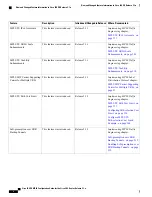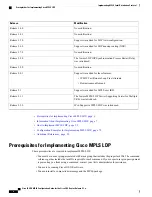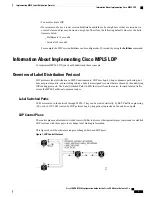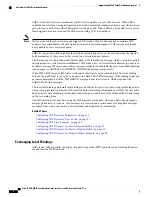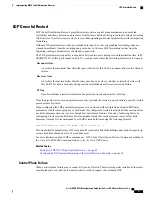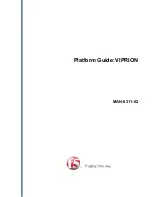
Configure the Ignore IS-IS Overload Bit Setting in MPLS-TE: Example
344
Configure GMPLS: Example
345
Configure Flexible Name-based Tunnel Constraints: Example
347
Configure an Interarea Tunnel: Example
349
Configure Forwarding Adjacency: Example
349
Configure Unequal Load Balancing: Example
350
Configure PCE: Example
351
Configure Policy-based Tunnel Selection: Example
351
Configure Tunnels for Path Protection: Example
352
Configure Tunnels for Explicit Path Protection: Example
352
Configure Tunnels for Co-existence of Path Protection with Fast Reroute: Example
353
Configure Automatic Bandwidth: Example
353
Configure the MPLS-TE Shared Risk Link Groups: Example
353
Configure the MPLS-TE Auto-Tunnel Backup: Example
356
Configure Point-to-Multipoint TE: Examples
362
Configure Point-to-Multipoint for the Source: Example
363
Configure the Point-to-Multipoint Tunnel: Example
363
Disable a Destination: Example
364
Configure the Point-to-Multipoint Solution: Example
364
Configure MPLS TE Path-selection Cost Limit: Example
368
Additional References
368
C H A P T E R 7
Implementing GMPLS UNI
371
Prerequisites for Implementing GMPLS UNI
371
Restrictions for Implementing GMPLS UNI
372
Information About Implementing GMPLS UNI
372
GMPLS UNI vs GMPLS NNI
372
GMPLS LSP Signaling
372
Path Message without an ERO
373
XRO Attribute-set
373
Connection Diversity
373
GMPLS RSVP VRF Signaling
373
DWDM Transponder Integration
374
How to Implement GMPLS UNI
374
Configuring TE for GMPLS UNI
374
Cisco IOS XR MPLS Configuration Guide for the Cisco CRS Router, Release 5.1.x
xiv
Contents




















